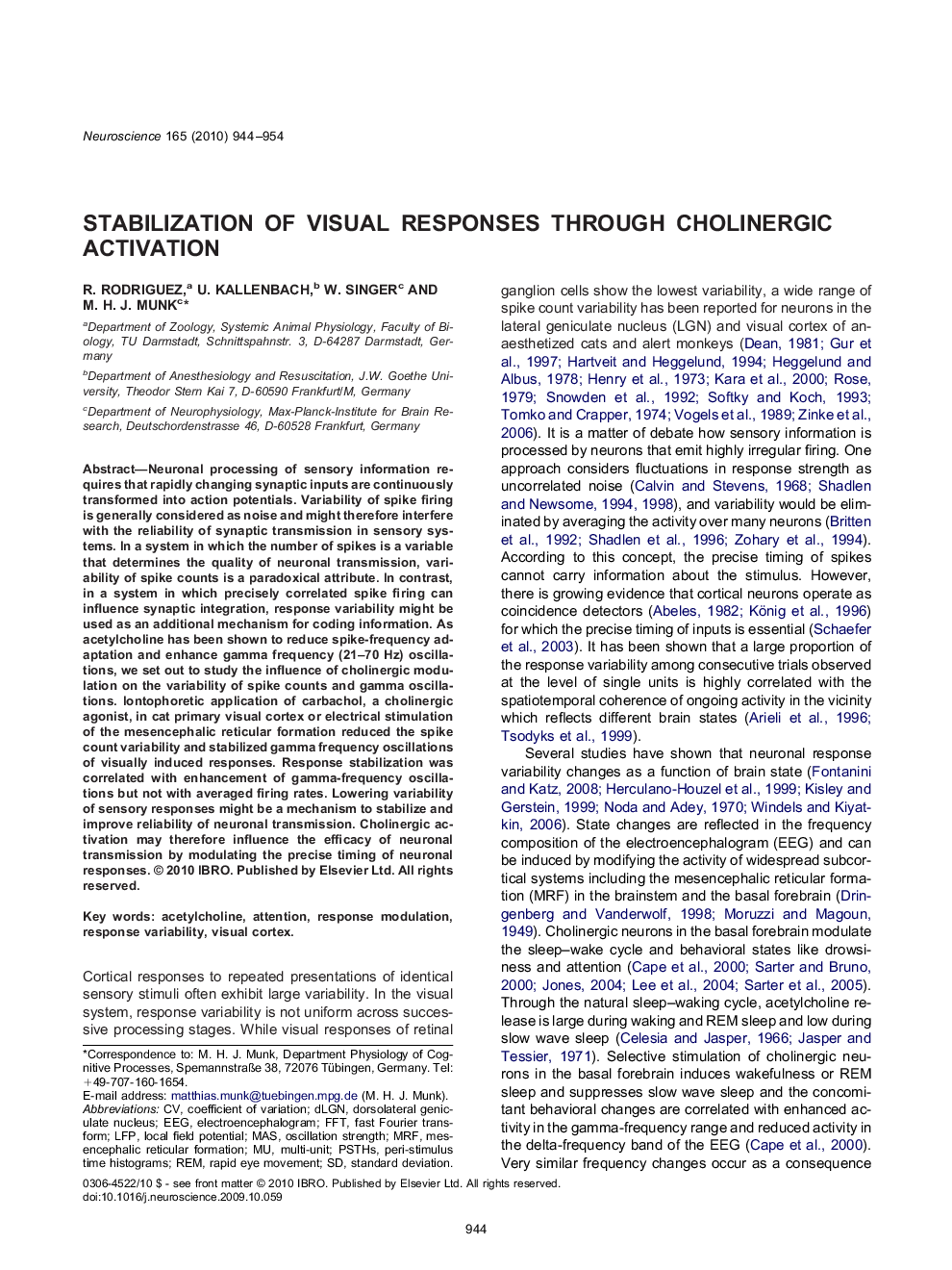| Article ID | Journal | Published Year | Pages | File Type |
|---|---|---|---|---|
| 4339561 | Neuroscience | 2010 | 11 Pages |
Neuronal processing of sensory information requires that rapidly changing synaptic inputs are continuously transformed into action potentials. Variability of spike firing is generally considered as noise and might therefore interfere with the reliability of synaptic transmission in sensory systems. In a system in which the number of spikes is a variable that determines the quality of neuronal transmission, variability of spike counts is a paradoxical attribute. In contrast, in a system in which precisely correlated spike firing can influence synaptic integration, response variability might be used as an additional mechanism for coding information. As acetylcholine has been shown to reduce spike-frequency adaptation and enhance gamma frequency (21–70 Hz) oscillations, we set out to study the influence of cholinergic modulation on the variability of spike counts and gamma oscillations. Iontophoretic application of carbachol, a cholinergic agonist, in cat primary visual cortex or electrical stimulation of the mesencephalic reticular formation reduced the spike count variability and stabilized gamma frequency oscillations of visually induced responses. Response stabilization was correlated with enhancement of gamma-frequency oscillations but not with averaged firing rates. Lowering variability of sensory responses might be a mechanism to stabilize and improve reliability of neuronal transmission. Cholinergic activation may therefore influence the efficacy of neuronal transmission by modulating the precise timing of neuronal responses.
